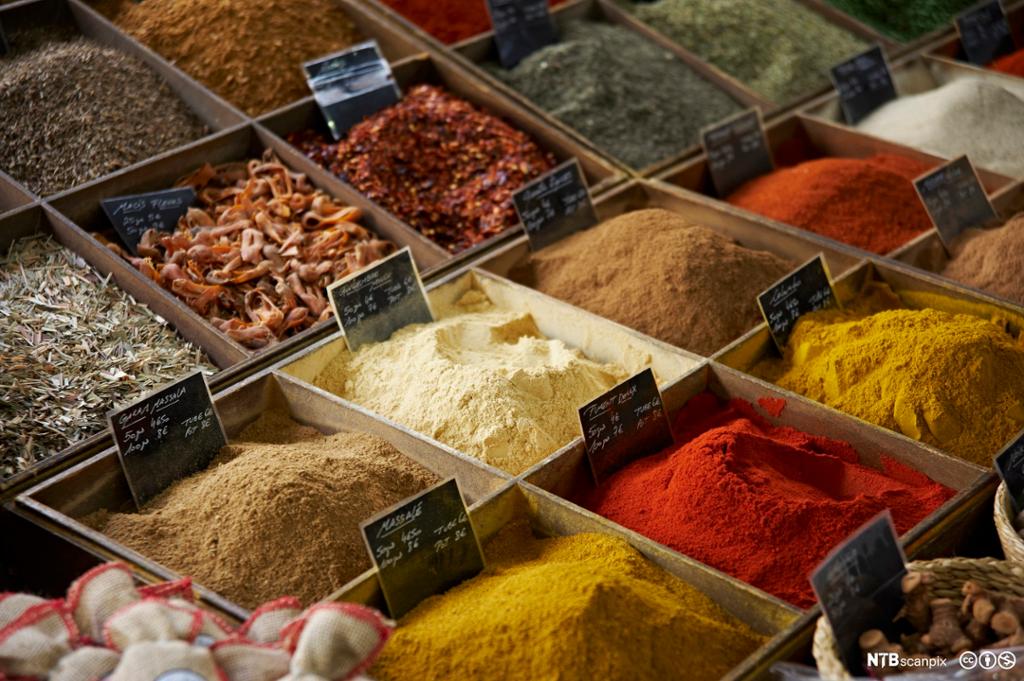Spices and Herbs

Spices
A spice is a dried seed (cardamom), fruit (black pepper), root (ginger), bark (cinnamon) or vegetable substance (garlic) from a plant. Spices have, throughout history, been essential in cooking for flavour, colour and as a preservative. They have also been important ingredients in medicine. Their properties made them valuable items in ancient and medieval times, and today there is an immense selection of spices which are used in small quantities in any tasty food. Herbs are the leafy, green part of plants and are also used for both flavouring food and making medicine.
One of the aims of the great explorers was to obtain spices from the east. Christopher Columbus was looking for a new route to India when he discovered America in 1492. At that time, because of the lack of refrigeration, spices were important for the conservation of meat which would soon have gone off due to high temperatures. When Britain colonised India, the country's natural resources were exploited, and consequently spices were one of the most important trade goods and became more and more common in European cuisine.
Today, India has experienced an increase in the export of spices and is at present the world’s largest exporter. This growth is mainly due to changes in the lifestyles of consumers all over the world. People travel more than ever and want to have unforgettable culinary experiences and to recreate these experiences at home.
The knowledge of spices is essential in any cooking worldwide. Spices are usually dried, whole or ground, but can also be sold fresh. Spices are added to food early in its preparation to give time for the flavour to be released.They are very important for people who are serious about cooking great tasting meals. Using the right spice will make the difference between an excellent meal and an ordinary one. Great tasting meals start with great tasting spices!
Tasks and Activities
Comprehension
- What purpose do spices have in cooking?
- In which other area have spices been used?
- What is the difference between herbs and spices?
- Why were spices important in earlier times?
- Which country has always been and still is important for the spice trade?
- Why is there an even greater demand for spices today?
- During cooking, when should spices be added and why?
Spices and Herbs
- Do the interactive tasks, Spices and Herbs 1 and Spices and Herbs 2, Vocabulary - Drag and Drop. Match the Norwegian and the English names.
- Arrange the following in a table showing which are herbs and which are spices? allspice, basil, bay leaves, black pepper, cardamom, cinnamon, cumin, cloves, chillies, garlic, ginger, marjoram, mustard, nutmeg, parsley, poppy seed, rosemary, sage, tarragon, thyme, turmeric
- Choose 4 spices or herbs mentioned in tasks 1 or 2 or others you know of and find out which country/countries they came from originally and what they are used for.
Presentation
Choose one dish (perhaps you have a favourite but if not search for one on the internet), write out the recipe with special attention to the spices and/or herbs which are added, and then make a presentation to your classmates and try to persuade them that this dish is something they must try.